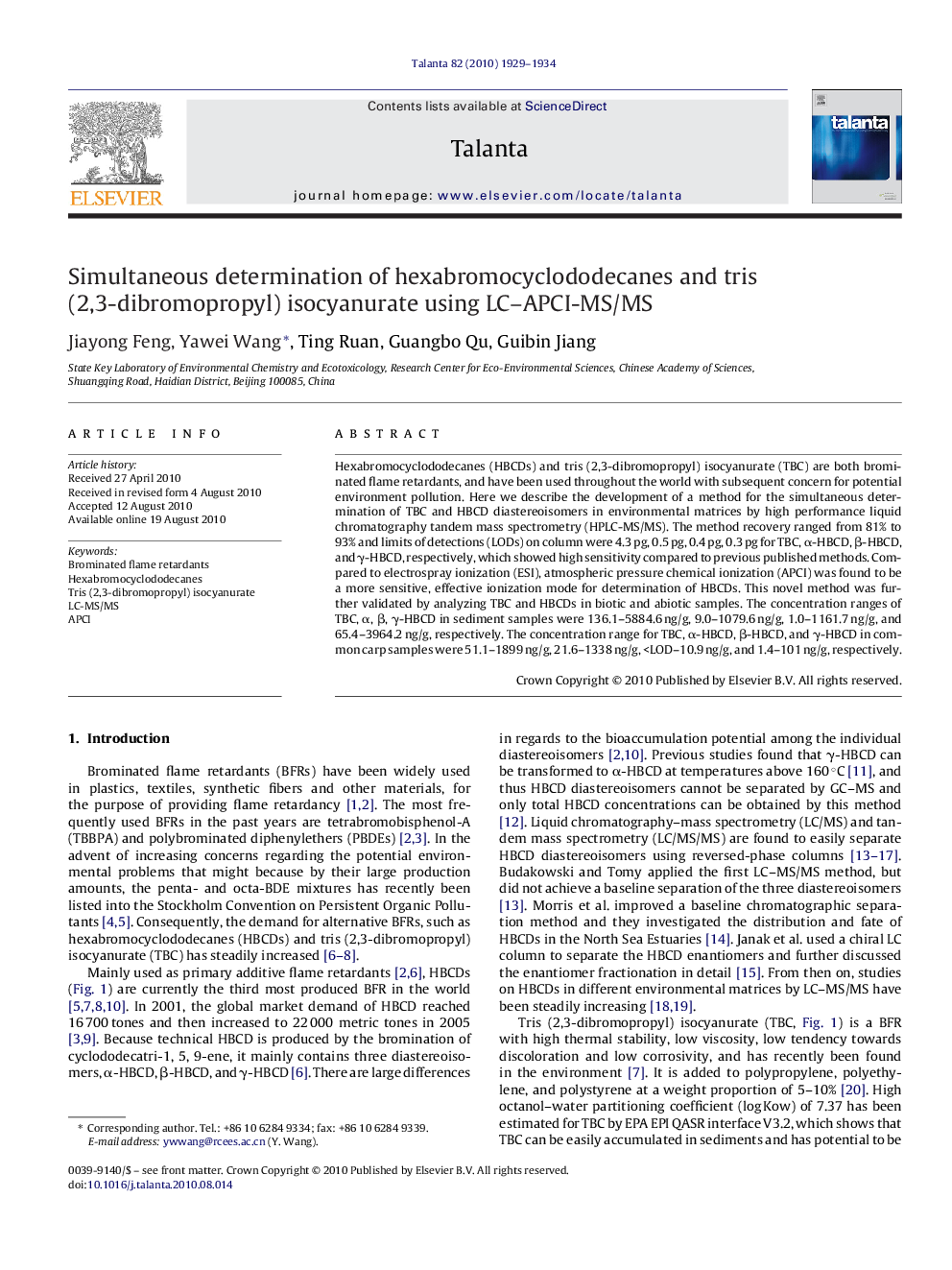| Article ID | Journal | Published Year | Pages | File Type |
|---|---|---|---|---|
| 1246221 | Talanta | 2010 | 6 Pages |
Hexabromocyclododecanes (HBCDs) and tris (2,3-dibromopropyl) isocyanurate (TBC) are both brominated flame retardants, and have been used throughout the world with subsequent concern for potential environment pollution. Here we describe the development of a method for the simultaneous determination of TBC and HBCD diastereoisomers in environmental matrices by high performance liquid chromatography tandem mass spectrometry (HPLC-MS/MS). The method recovery ranged from 81% to 93% and limits of detections (LODs) on column were 4.3 pg, 0.5 pg, 0.4 pg, 0.3 pg for TBC, α-HBCD, β-HBCD, and γ-HBCD, respectively, which showed high sensitivity compared to previous published methods. Compared to electrospray ionization (ESI), atmospheric pressure chemical ionization (APCI) was found to be a more sensitive, effective ionization mode for determination of HBCDs. This novel method was further validated by analyzing TBC and HBCDs in biotic and abiotic samples. The concentration ranges of TBC, α, β, γ-HBCD in sediment samples were 136.1–5884.6 ng/g, 9.0–1079.6 ng/g, 1.0–1161.7 ng/g, and 65.4–3964.2 ng/g, respectively. The concentration range for TBC, α-HBCD, β-HBCD, and γ-HBCD in common carp samples were 51.1–1899 ng/g, 21.6–1338 ng/g,
